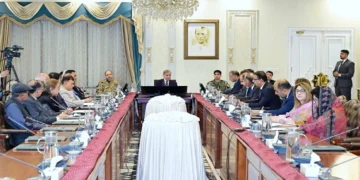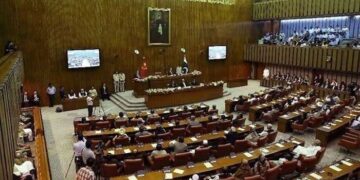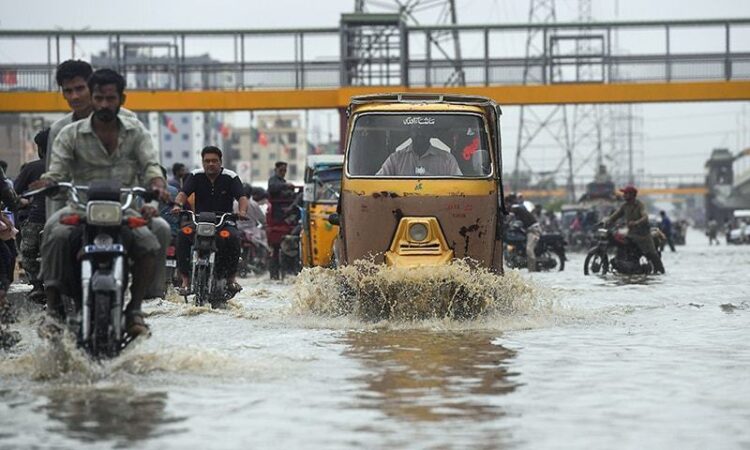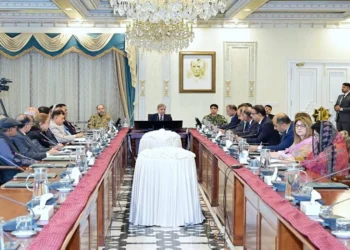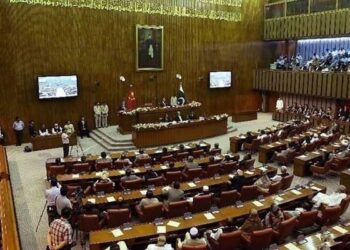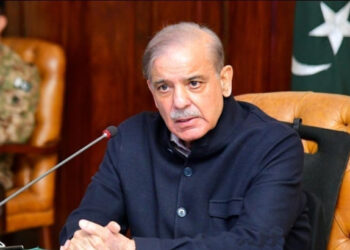KARACHI; At least six people lost their lives in rain-related incidents as torrential monsoon downpours lashed Karachi on Tuesday, paralyzing large parts of the city and prompting officials to declare a rain emergency. The Pakistan Meteorological Department (PMD) has warned that more showers are expected in the coming days, raising fears of further urban flooding and disruption.
The annual monsoon season, which typically runs from June to September, is critical for replenishing water resources but often brings devastation in poorly drained or densely populated areas. This week’s rainfall matched that trend, overwhelming Karachi’s already fragile drainage system and leaving major roads submerged.
According to the PMD, Gulshan-i-Hadeed recorded the heaviest downpour at 145 millimeters by 5 p.m., followed by 138mm in the Airport Old Area and 137mm in Keamari. Other neighborhoods, including University Road, Defence Housing Authority, Surjani Town, Korangi, and Nazimabad, also recorded substantial rainfall.
The heavy showers caused severe traffic jams as key arteries of the city were inundated. Karachi traffic police urged drivers to adopt precautionary measures, including maintaining safe distances and avoiding sudden braking.
Tragically, Rescue-1122 reported multiple casualties. In Gulistan-i-Jauhar’s Block-12, the walls of a house collapsed, burying five family members. Three died on the spot, a fourth succumbed to injuries in hospital, while one survivor remains under treatment. In a separate incident in Orangi Town, an eight-year-old child was killed when a wall gave way. Additionally, a man in North Karachi died from electrocution, bringing the total death toll to six.
Sindh Chief Secretary Asif Haider Shah directed the district administration, PDMA, and rescue services to remain on high alert. He ordered the immediate drainage of accumulated rainwater and stressed continuous coordination with the PMD. All deputy commissioners were instructed to be present in the field.
Meanwhile, PMD’s advisory predicted intermittent rainfall with a minimum temperature of 28°C and humidity at 85 percent. It warned of heavy downpours across Karachi, Hyderabad, Thatta, Mirpurkhas, Tharparkar, and parts of Balochistan through August 22. The department cautioned that torrential rains could trigger flash floods in low-lying urban areas and hilly terrain.
K-Electric confirmed that 1,340 of its 2,100 feeders were operational but acknowledged disruptions in low-lying neighborhoods due to safety shutdowns. Restoration, the utility said, would only proceed once water receded and ground teams confirmed safety.
In response to the worsening situation, Sindh Chief Minister Murad Ali Shah chaired an emergency meeting and instructed local bodies, traffic police, and disaster response units to be fully mobilized. Karachi Mayor Murtaza Wahab also declared a citywide rain emergency, canceling staff leave and ordering essential services to set up a Rain Emergency Cell.
The East Zone police placed officers on high alert, emphasizing drainage, traffic flow, and the protection of life and property. Citizens were advised to avoid unnecessary movement and to report emergencies via helplines.
Governor Kamran Tessori also announced the establishment of a 24/7 emergency cell at the Governor’s House, pledging that citizens would “not be left alone in difficult times.”
As rains continue, Karachi braces for more challenges, with officials warning that the situation could worsen if weather patterns intensify over the coming days.


